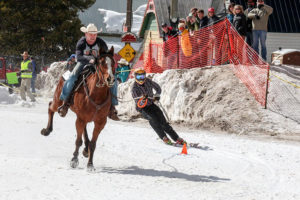
Your Horse-Related New Year’s Resolutions Guide
Ready to ride more? Do you want to improve your horse’s health? Find out how to make your resolutions stick.


Ready to ride more? Do you want to improve your horse’s health? Find out how to make your resolutions stick.

Don’t get snowed in this winter—discover the thrilling sport of skijoring, which involves a horse and rider towing a skier at speeds reaching 35 miles an hour.

Owners and veterinarians involved with two small-scale horse breeding operations share their secrets to success.

Does your horse have annoying guck on his lower leg or body? Here’s your quick guide to managing and preventing skin crud on your horse.

Reining horses and those competing in other cattle events often wear slide plates. These specialized hind shoes allow them to slide while reducing joint stress.

Researchers have learned that genetics have more influence on a horse’s risk of developing EMS than previously thought.

Researchers identified three ways to help improve pregnancy and foaling rates: breeding mares multiple times in a season, inseminating close to ovulation, and choosing a stallion with progressively motile sperm.

Researchers developed the new method for horses based on work conducted in humans. The procedure involves two stabilization devices: an intervertebral device to reduce compression and screws with rotating heads and connecting rods to stabilize the vertebrae.

Veterinarians often prescribe medications to control acute and chronic clinical signs of disease, along with recommending environmental changes to limit asthmatic horses’ exposure to inhaled allergens. What do owners think of these sometimes time-consuming and expensive suggestions?

Chemotherapy can help horses with lymphoma achieve remission and extend their lifespans for several months or years, researchers learned.

Here are four crucial areas to include in your horse grooming routine.

When veterinarians applied a compression bandage to the horse’s pastern before administering a palmar digital nerve block, the drugs remained localized to the hoof rather than spreading further up into the leg.

While wire ingestion was once considered a death sentence, researchers recently found that surgery can save some affected horses, especially if the foreign body is identified and treated early.

Horses are at risk of adverse effects anytime they receive injections. However, researchers recently determined that stem cell injection site reactions in horses were uncommon in the population they studied.

Recent study results suggest the overall septic arthritis rate following surgery was 0.47%, which is similar to previously reported rates. Further, researchers found no association between inpatients’ and outpatients’ septic arthritis development rate.

Researchers found that their technique for removing ostoechondral fragments from the hock was efficient and had few postoperative complications.
Stay on top of the most recent Horse Health news with